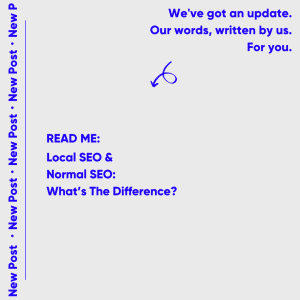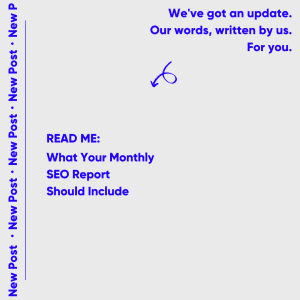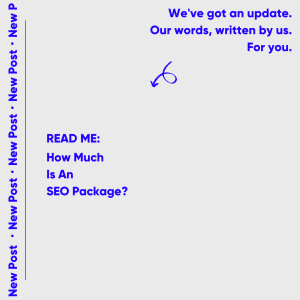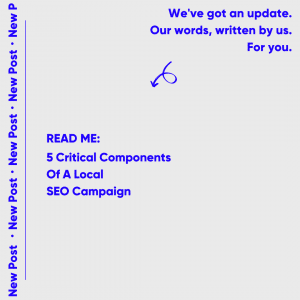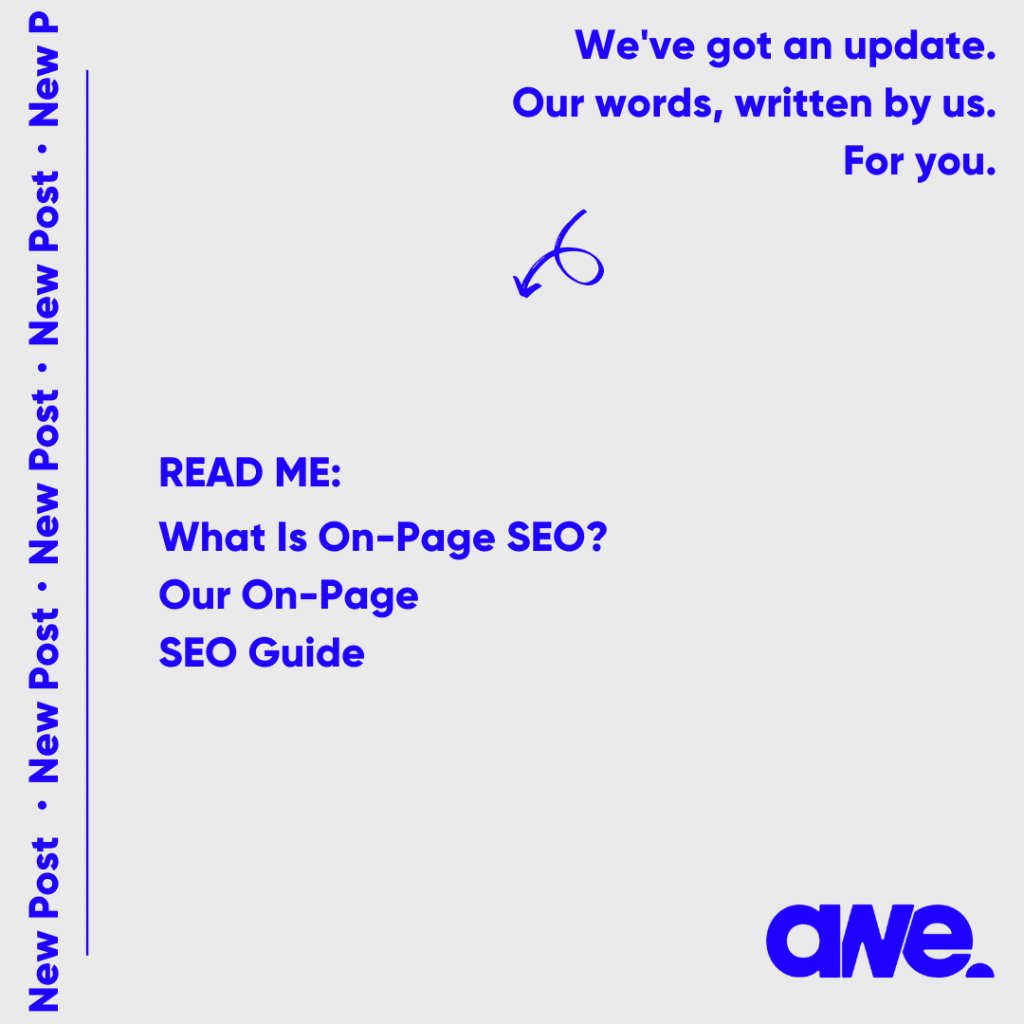
If you are wondering what on-page SEO is, you have found the right place! In our on-page SEO guide, we are going to cover off exactly what on-page SEO (sometimes referred to as on-site SEO) is, and how you can maximise on-page SEO for your own business.
So, what is on-page SEO?
On-page SEO, or on-page search engine optimisation, refers to the optimisations you make for search engines on your website. Not to be confused with off-page SEO, or technical SEO, on-page SEO is the SEO completed on the front end of your website.
Essentially, on-page SEO is the search engine optimisation completed on your website for search engines to read and determine where your website should be placed in the organic search results. On-page SEO is the optimisations you conduct on the website itself. With that out of the way, let’s jump into some of the many on-page SEO ranking factors.
On-Page SEO Ranking Factors
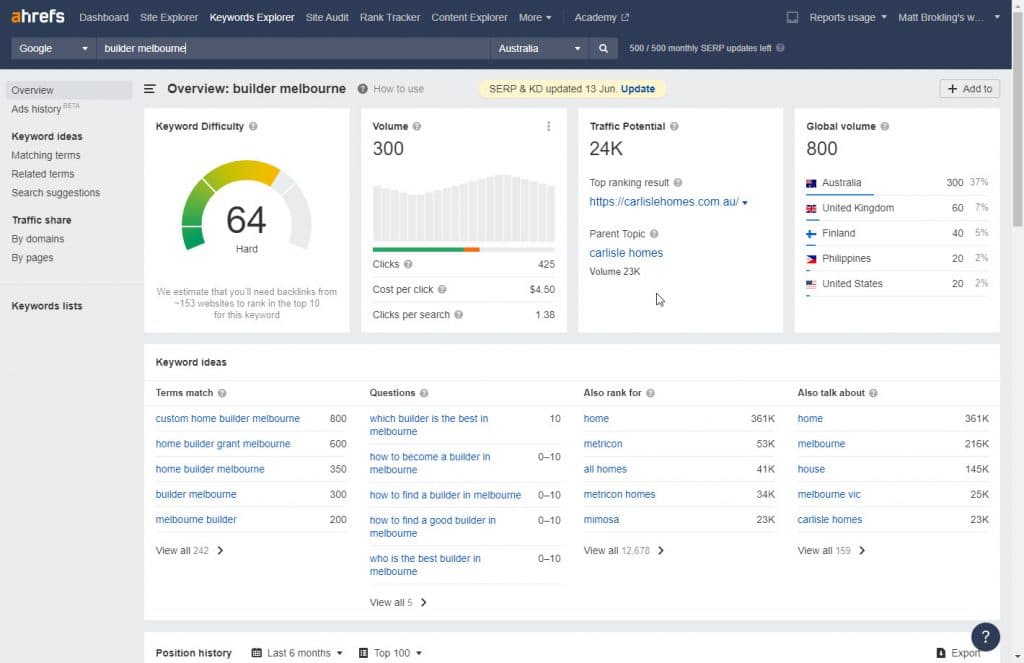
As with everything SEO, there are a wide variety of factors (often hundreds) that go into each specific element of your websites SEO or SEO campaign. We are going to outline some of the most integral on-page factors that determine how search engines read your website, and how search engines such as Google place your website in the search results.
Keyword Research
Commonly overlooked, keyword research is possibly the most critical element of any websites’ on-page SEO. Without a clear direction of the keywords you want your businesses website to be discovered for in the organic search results, there is no point conducting any of the other critical on-page optimisations.
The keyword research that you undertake will determine your exact keyword placements and should not be skipped when conducting your on-page SEO strategy.
A proper keyword research strategy involves identifying your main business service offering, and compiling a list of the suburbs and/or geographic locations you would like your business to be discoverable in. For example, if you are a residential builder servicing the eastern suburbs of Melbourne, a keyword strategy may look something like the following:
- Service: Residential Builder. Location: Kew. Keyword: Residential Builder Kew
- Service: Residential Builder. Location: Hawthorn. Keyword: Residential Builder Hawthorn
- Service: Custom Homes. Location: South Yarra. Keyword: Custom Homes South Yarra
A comprehensive keyword research strategy for on-page SEO will look into monthly search volumes, competitor analysis and more before finalising an ideal keyword list. Once this is completed, you can move onto the next aspects of on-page SEO.
Meta Titles & Meta Descriptions
With your comprehensive list of ideal keywords, it is now time to start implementing these into your meta titles and meta descriptions. Meta titles and meta descriptions are an important on-page SEO signal for search engines, as they explain what the specific website page is about and what information can be found on your website.
If your website is missing meta titles or meta descriptions, which is very common across most websites that have not conducted proper on-page SEO, it is time to add well thought out meta descriptions that contain your ideal keywords.
The key here is not to over optimise your website with unrelated keywords stuffed into your meta tags. You need to ensure that your meta information matches the search intent of your website and clearly explains what your website page is about.
Alternative (Alt) Image Text
Website images need to be optimised properly for on-page SEO. If you use a Content Management System (CMS) such as WordPress, it is quite straightforward to implement alternative image text into your existing website images.
With your ideal keyword list, and related keywords, it is important to ensure these files are named properly for on-page SEO purposes. This means that the images across your website should have a filename that matches your keyword list, matches your search intent and relates to your website.
Long gone are the days of having images uploaded to a website with file names such as “Image-3000-pcdxsd.jpeg”. For proper on-page SEO to be completed, you need to ensure your file names are appropriately optimised for each image uploaded onto your website.
From here, you need to ensure that you manually update the alternative (alt) image text through your CMS media manager to explain what your image is about. This helps Google read your website appropriately, and greatly assists with on-page SEO.
Content Length For On-Page SEO
When it comes to on-page SEO, the content length on each of your website pages is a very important ranking factor for search engines. A lot of the time, having pages with less than 500 words on them will mean that the page simply won’t rank within the search engine result pages.
It is critical for business owners who are investing time and effort into on-page SEO to ensure they are writing clear, comprehensive content with a ball-park of 700 – 1,000 words per page.
This allows the content to rank well within the Google algorithm and allows you to clearly explain the question, answer or topic you are covering on that particular page. Content length is an extremely important factor for your overall on-page SEO campaign.
Content Production & Frequency
You need to ensure that when you are producing content for your business website or blog that you are posting frequently. As a general rule, Google will favour and regularly crawl websites that update their website more often. Websites that are updated with fresh content more often will be favoured in the organic search results across all search engines.
Beyond this, providing your audience with relevant and new content will keep your website visitors consistently engaged with your website. The more your audience is engaged with your website and content, the better your overall website metrics will look to Google.
The frequency and production of your content forms a positive feedback loop for both search engine rankings and for your audience. We recommend ensuring you are keeping your businesses blog or website as up-to-date as you can. As a very general guide, one new blog or content piece a week should be enough to satisfy your on-page SEO strategy.
URL Structure
When it comes to on-page search engine optimisation, the URL structure for your pages form a very important element of your ranking strategy. You may be wondering what we mean by URL structure. A URL structure is the part of your inner pages URL after the backslash of your domain.
As an example, our website domain is australianwebexperts.com.au. The URL structure for each page we build would be something like oururl.com/on-page-seo-guide/.
You can see by this URL structure that we are manually updating your own URL structure so that it clearly explains what the specific page is about. We often see clients with URL structures and permalinks such as example.com/post=34546454/.
This example of an unoptimised permalink may contain the exact same content as our On Page SEO Guide page, however the URL structure does not include any relevant information on what the post contains.
By ensuring you optimise your URL structure appropriately, you are giving Google and search engines a better understanding of what your page is about. This allows search engines to index your page properly for the organic search results. The URL strategy of your on-page SEO is something that should not be skipped for those wishing to increase their websites organic rankings.
On-Page Internal Linking
One important aspect of on-page SEO is internal linking. This is when you link to other pages on your website from within your website content. Internal links can help improve your website’s navigation and overall user experience, while also helping search engines crawl and index your pages more effectively.
When adding internal links, be sure to use keyword-rich anchor text that accurately describes the page you’re linking to. This will help both users and search engines understand what the linked page is about. Additionally, try to add internal links to pages that are relevant to the topic at hand.
For example, if you’re writing a blog post about gardening, you could link to a page on your website that sells gardening supplies. By adding these types of links, you can help improve the overall quality of your website’s content and make it more useful for both users and search engines.
Duplicate Content
Duplicate content is one of the worst offenders for poorly executed on-page SEO. Search engines index websites by crawling through their content and looking for keyword matches. If they find multiple instances of the same content on different pages, they will likely index only the first instance and ignore the rest. This can have a major impact on your website’s search engine ranking.
In addition, search engines may also penalise websites with duplicate content by giving them a lower ranking. As a result, it’s important to avoid duplicate content whenever possible. There are a number of ways to do this, such as using original content or using canonical tags to point search engines to the original source of the content. Duplicate content is bad for on-page SEO, so be sure to avoid it.
On-Page SEO Guide Conclusion
So, what have we learned from this on-page SEO guide? On-page SEO is an important part of any website’s ranking strategy. By following the tips in this guide, you can improve your website’s visibility in search engine results pages and increase traffic to your site. Additionally, you can improve your website’s overall quality and user experience by optimising your content and navigation.
There’s a lot to on-page SEO, but by following the tips in this guide, you can start improving your website’s ranking today. If you need a more beginner guide to SEO and what search engine optimisation is, check out our recent article on this.
If you would a custom on-page SEO strategy built for your business, please do not hesitate to reach out to our dedicated SEO expert team. We love to flesh out cutting-edge SEO campaigns and strategies for clients right across Australia.

